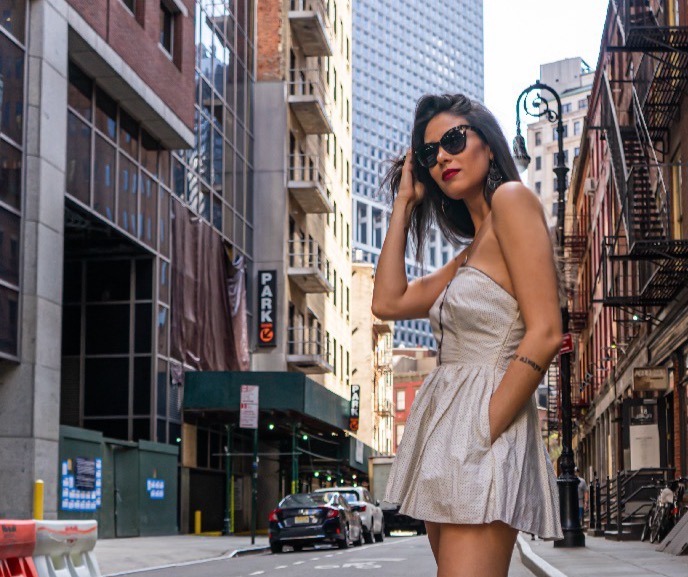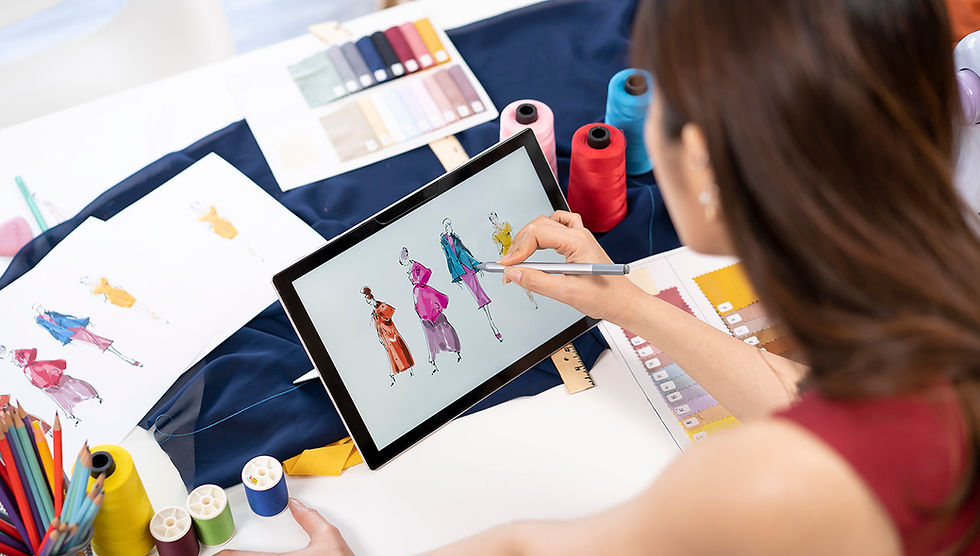INSIDE THE FASHION INDUSTRY - AI Predicting Fashion Trends
- Barbara Sessim

- Jul 17, 2024
- 3 min read

The fashion industry is synonymous with rapid change, innovation, and creativity. One of the most revolutionary advancements in recent years is the incorporation of artificial intelligence to predict fashion trends. This fusion of technology and fashion is reshaping how designers, brands, and retailers approach the ever-evolving landscape of style.
The Role of AI in Fashion Trend Prediction
AI's ability to analyze vast amounts of data and identify patterns makes it an invaluable tool for predicting fashion trends. Traditional methods of trend forecasting relied heavily on human intuition and historical data. However, AI can process current and real-time data from social media, online searches, and retail transactions to provide more accurate and timely insights.
How AI Predicts Trends
Data Collection and Analysis: AI systems gather data from various sources such as social media platforms, fashion blogs, e-commerce sites, and even global news. This data includes images, text, and consumer behaviors which are then analyzed to identify emerging patterns and preferences.
Image Recognition: AI uses image recognition technology to scan millions of fashion images posted online. By analyzing the color, texture, and style of clothing, AI can determine what trends are gaining popularity.
Natural Language Processing (NLP): Through NLP, AI can interpret and understand human language. This capability allows AI to analyze fashion-related discussions on social media and blogs to gauge public sentiment and interest in specific trends.
Predictive Analytics: AI algorithms use historical data and current trend information to predict future fashion trends. This predictive power helps brands stay ahead of the curve by anticipating what consumers will want next.
Brands Leading the Way
Several forward-thinking brands are already harnessing the power of AI to predict fashion trends:
H&M: The Swedish fast-fashion giant uses AI to analyze customer data and predict which styles will be popular in upcoming seasons. By integrating AI into their supply chain, H&M can quickly adapt to changing consumer demands, reducing waste and improving efficiency.
Zalando: This German e-commerce company employs AI to personalize shopping experiences and recommend products to customers. By analyzing browsing history and purchase behavior, Zalando's AI system can predict and suggest fashion items that are likely to appeal to individual shoppers.
Tommy Hilfiger: In collaboration with IBM and the Fashion Institute of Technology, Tommy Hilfiger has developed an AI system that analyzes runway images, social media, and consumer feedback. This system helps the brand design collections that resonate with contemporary trends and consumer preferences.
Stitch Fix: The online personal styling service leverages AI to curate personalized clothing recommendations for its customers. By analyzing style preferences and feedback, Stitch Fix's AI algorithms can predict fashion trends and tailor selections to individual tastes.
The Impact of AI on the Fashion Industry
The integration of AI in trend prediction offers numerous benefits for the fashion industry:
Sustainability: By accurately predicting consumer preferences, brands can produce clothing that is more likely to sell, reducing overproduction and waste. This shift towards a more sustainable model aligns with the growing demand for environmentally conscious fashion.
Efficiency: AI streamlines the design and production process, allowing brands to respond quickly to emerging trends. This agility is crucial in an industry where timing can make or break a collection's success.
Personalization: AI enables a higher level of personalization in fashion retail. By understanding individual consumer preferences, brands can offer more targeted recommendations, enhancing the shopping experience and increasing customer loyalty.
Innovation: The use of AI fosters innovation by providing designers with new insights and inspirations. This technological collaboration encourages creativity and the exploration of novel design concepts.
The Future of AI in Fashion
As AI technology continues to advance, its role in the fashion industry is set to expand. Future developments may include even more sophisticated predictive models, real-time trend tracking, and enhanced virtual try-on experiences. Brands that embrace AI will be better equipped to navigate the dynamic world of fashion, staying ahead of trends and meeting the ever-changing demands of consumers.
The integration of AI in predicting fashion trends represents a significant leap forward for the industry. By leveraging the power of data and machine learning, fashion brands can anticipate trends with unprecedented accuracy, fostering sustainability, efficiency, and innovation. As we look to the future, AI will undoubtedly continue to shape the fashion landscape, driving the industry towards a more responsive and consumer-centric era.
References
McDowell, M. (2020). "How Artificial Intelligence is Revolutionizing the Fashion Industry." Forbes. Retrieved from Forbes.
Ng, Y. (2021). "H&M Uses AI to Predict Fashion Trends." Retail Gazette. Retrieved from Retail Gazette.
Davies, G. (2021). "Zalando's AI Fashion Trends Prediction Model." TechCrunch. Retrieved from TechCrunch.
"How Tommy Hilfiger is Using AI to Create New Fashion Collections." (2019). IBM Newsroom. Retrieved from IBM.
"Stitch Fix and the Future of Fashion." (2020). Wired. Retrieved from Wired.







Comments